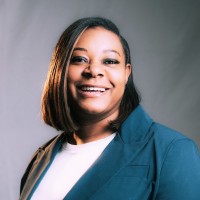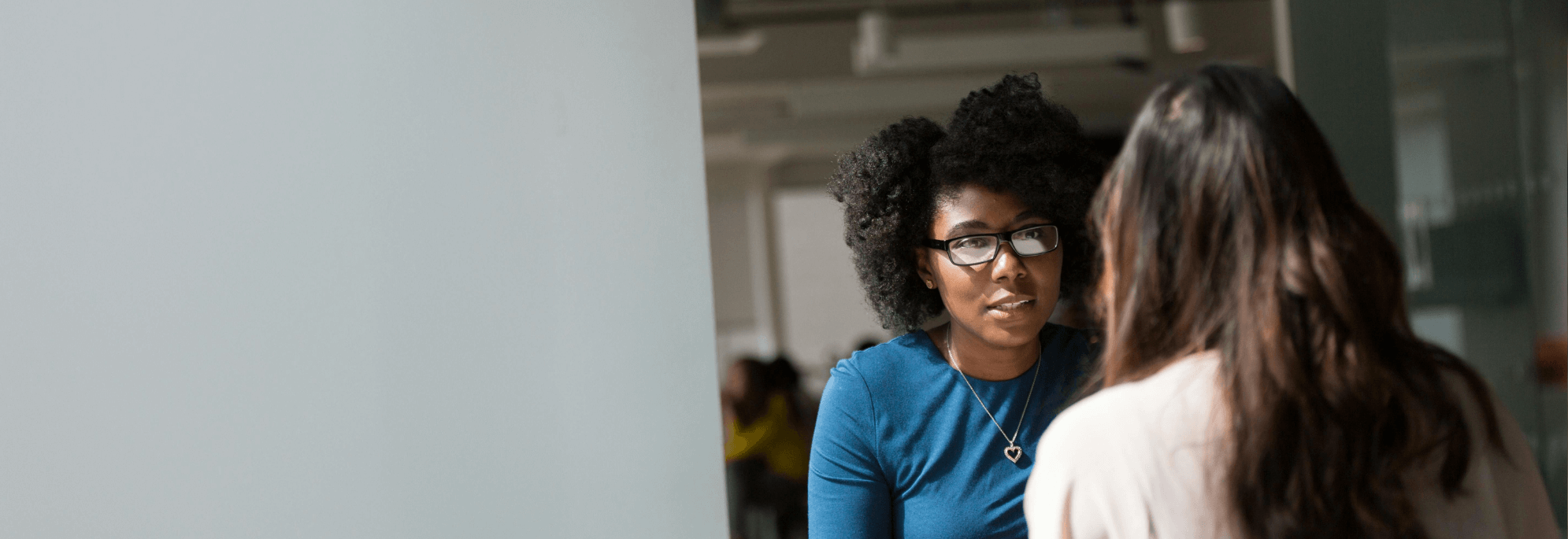El arte de la entrevista - Parte 1: Guía para conseguir el trabajo



Hablemos de entrevistas de trabajo.
Si usted es como la mayoría de la gente, sólo con leer esas dos palabras le han sudado un poco las palmas de las manos. Puede parecer que todo tu futuro, tu estabilidad, todo, depende de esos minutos cruciales en los que estás en el banquillo.
La realidad es la siguiente: una oferta de trabajo media en una empresa atrae 250 currículos, pero sólo 20% de los candidatos son convocados a una entrevista. Es decir, si has llegado a la fase de entrevista, ya estás en un grupo de élite. Ahora viene el verdadero reto.
"Estar preparado no consiste sólo en tener las respuestas correctas, sino en saber cómo contar tu historia de forma que resuene", explica el experto en entrevistas y TaskHuman Entrenadora Shawanna Lawrence.
En esta guía aprenderás a:
Tanto si está pensando en una promoción interna, como en cambiar de empresa o acceder a su primer puesto profesional, aprenderá estrategias que le ayudarán a tener éxito.
¿Y lo mejor? No se trata sólo de consejos teóricos, sino de estrategias probadas que funcionan en entrevistas reales.
Después de comprometerse con esta pieza fundamental, aprenda lo que diferencia una buena entrevista de una gran entrevista tomando su preparación de entrevistas al siguiente nivel, y cómo conseguir la satisfacción laboral a largo plazo.
Empecemos.
¿Sabe qué diferencia una buena entrevista de una gran entrevista? La intención.
Esto significa dedicar tiempo a informarse sobre la empresa, lo que representa, sus valores y si se alinea con su misión personal, incluso antes de que tenga lugar la entrevista. Dedicar tiempo a esto mejora sus posibilidades de éxito en la entrevista y le ayuda a elegir las oportunidades más adecuadas.
Volvamos a antes de que empieces a practicar tu apretón de manos o a elegir tu atuendo para la entrevista.
Entrenadora Shawanna hace hincapié en una acción crucial que muchos candidatos pasan por alto: "Quiero averiguar qué quiere ganar el cliente con la preparación de la entrevista. ¿Está buscando internamente? ¿O externamente?".
Esta pregunta va al meollo de su preparación.
¿Tienes claro lo que quieres? Porque esta es la verdad: si tú no tienes claros tus objetivos, el entrevistador tampoco los tendrá. Tómate tu tiempo para reflexionar:
"Investiga cuáles son sus puntos de dolor", aconseja Shawanna a la hora de conocer mejor a la empresa con antelación. "Habla de cómo puedes ayudarles con esos puntos débiles". No se trata sólo de explorar la página web de la empresa, aunque eso también es importante.
Pruebe esta lista de comprobación para la investigación:
Un consejo profesional: "Investiga sobre las personas que forman parte del panel de entrevistadores", dice Shawanna. "Comparte algo que hayas visto en LinkedIn o en algún sitio durante la entrevista. Encuentra puntos de conexión con esas personas".
Este tipo de preparación demuestra iniciativa y ayuda a crear una relación genuina durante la entrevista.
Tiene una ventaja única si entrevista internamente, aunque pocas personas la utilizan con eficacia.
Shawanna menciona un error común: "Esperar que la empresa defina tu trayectoria profesional. Acudir a RRHH como punto de partida. No empezar con un jefe".
En cambio, antes de su entrevista interna:
Shawanna hace hincapié en este cambio de mentalidad: "Tú eres el dueño, nosotros te ayudamos a trazar el mapa". Pasar de candidato pasivo a arquitecto de carrera activo puede transformar por completo tu presencia en la entrevista.
Lo bueno de una preparación minuciosa es que genera auténtica confianza, no la superficial que se desvanece bajo presión, sino la seguridad profunda que da el saber que has hecho el trabajo.
Los entrevistadores notan la diferencia.
¿Algo que podría cambiar por completo tu enfoque de la preparación de una entrevista? No se trata solo de lo que has hecho, sino de cómo lo cuentas.
Piense en la última vez que vio una gran película o no pudo dejar de leer un libro. ¿Qué fue lo que te cautivó? La historia. El mismo principio se aplica a las respuestas de las entrevistas.
La entrenadora Shawanna presenta un enfoque que cambia las reglas del juego a la hora de estructurar tus respuestas: "Céntrate en las 3 W: ¿Cuál era el problema, tu solución y tu resultado? Sé capaz de hacerlo en 2 minutos o menos".
Este marco es brillante por su sencillez. Desglosémoslo con un ejemplo:
❌ Respuesta débil: "Dirigí un equipo que mejoró nuestras métricas de atención al cliente".
✅ Respuesta contundente utilizando las 3 W: "Nos enfrentábamos a un retraso de 40% en el tiempo de respuesta al cliente (el problema). Implanté un nuevo sistema de enrutamiento de tickets y formé al equipo en estrategias de priorización (la solución). En tres meses, redujimos los tiempos de respuesta en 65% y mejoramos las puntuaciones de satisfacción del cliente en 28% (el resultado)."
¿Ve la diferencia? La segunda versión cuenta una historia específica, medible y memorable.
Este es un escenario común: los candidatos practican tanto que empiezan a sonar como chatbots de IA. Shawanna da en el clavo: "Ser apasionado es importante. A veces, cuando practicamos, la gente parece robótica aunque esté preparada".
La clave está en encontrar el punto medio entre preparación y autenticidad. Como con cualquier otra cosa en la vida, la gente tiende a hacerse una primera impresión en unos pocos segundos, que tiene un impacto duradero, así que haz que cuenten y empieza las cosas con buen pie.
Sé consciente, resuelto e intencionado.
Uno de los aspectos más difíciles de la narración de historias en las entrevistas, especialmente para puestos directivos, es cuantificar su impacto.
Como señala Shawanna: "Para los directivos que ascienden o pasan a la C-Suite, poder demostrar cómo has ahorrado dinero a la empresa" es crucial.
He aquí cómo cuantificar tus logros:
Consejo profesional: Mantén un documento de "victorias" actualizado mensualmente. Cuando llegue el momento de la entrevista, dispondrás de una mina de oro de logros específicos y cuantificables.
"Ser agradable. Ser capaz de mostrar tu pasión y entusiasmo por las cosas que has hecho de una manera narrativa", subraya Shawanna.
Aquí es donde muchos candidatos fallan: se centran tanto en lo que dicen que olvidan cómo lo dicen.
Recuerda: el entusiasmo es contagioso.
Cuando se interesa de verdad por lo que está hablando, es más probable que los entrevistadores se interesen por sus respuestas y le recuerden después de la entrevista. Entusiasmo genuino = mayores probabilidades de recibir la oferta de trabajo.
Además, tus historias deben parecer una conversación natural, no un discurso ensayado. Practique lo suficiente para conocer sus puntos clave, pero deje espacio para un compromiso auténtico en el momento.
A lo largo de esta guía, hemos revisado preparación fundacional necesarios para superar una entrevista.
Estos son sus puntos fuertes.
¿Cuál era el problema?
¿Cuál fue su solución?
¿Cuál fue el resultado? Esta sencilla estructura puede transformar la forma en que presentas tus experiencias.
Cuando se trata de entrevistas con éxito, no se trata sólo de conseguir el trabajo; se trata de encontrar el encaje adecuado en el que puedas seguir creciendo y contribuir de forma significativa.
"Tú eres el dueño, nosotros te ayudamos a trazar el mapa". Tu trayectoria profesional es exactamente eso: tuya. Esta guía te ha dado las herramientas, pero la magia ocurre cuando las pones en práctica.
Lecturas relacionadas: Lleve su entrevista al siguiente nivel & Prepararse para la satisfacción laboral